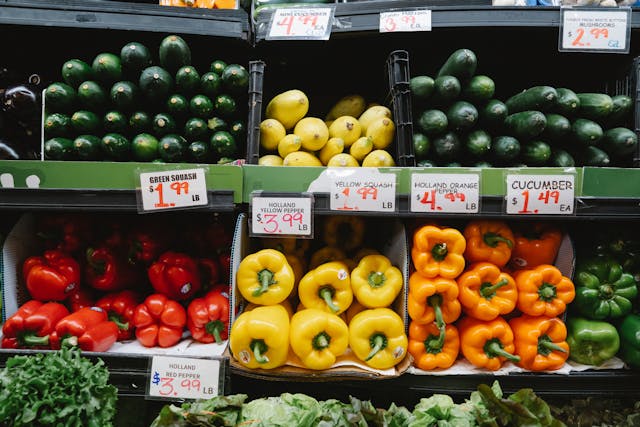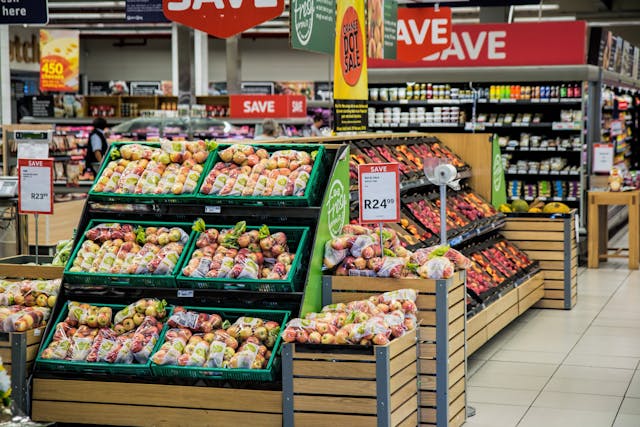In today’s economy, everyone is looking for ways to cut costs and save money. One of the most significant expenses for many families is the grocery bill. But fear not! There are plenty of strategies for keeping your food budget under control without sacrificing quality or variety. Here are the top 15 ways to save money on food, so you can enjoy delicious, budget-friendly meals year-round.
1. Plan Your Meals
Planning your meals for the week can have a huge impact on your grocery bill. By knowing exactly what you need, you can avoid impulse buys and make sure nothing goes to waste.
Stick to Your Shopping List
Once you’ve planned your meals, make a shopping list and stick to it. It’s easy to get sidetracked at the grocery store by sales and promotions, but if it’s not on your list, you probably don’t need it.
Read more tips on how to how to create a sound budget here.
2. Buy in Bulk
Purchasing items in bulk can lead to significant savings, especially for non-perishable items or foods that can be frozen for later use. Just be sure you have enough storage space and that you’ll use the items before they expire.
Stock your pantry with sumptuous meats, hearty breads, and exquisite wines fit for a royal banquet. Indulge in artisanal cheeses, succulent fruits, and decadent desserts that would make even kings envious! Amazon Fresh has you covered.
3. Go for Generic
Name-brand products often cost more due to advertising and packaging costs. Opt for generic or store brands instead — they usually have the same ingredients and taste as their name-brand counterparts but at a fraction of the cost.
4. Cook from Scratch
Pre-packaged and ready-made meals are convenient, but they’re also more expensive. Cooking from scratch is generally more budget-friendly, and it gives you full control over the ingredients and portion sizes.
Embrace Simple Recipes
Frugal cooking doesn’t mean bland or boring. Simple recipes often require fewer ingredients and can be just as delicious as more complex dishes.
5. Use Leftovers Wisely
Don’t let leftovers go to waste. Get creative and turn them into a different meal. Leftover roast chicken, for example, can become chicken salad, tacos, or soup.

6. Eat Less Meat
Meat is typically one of the more expensive items in your grocery cart. Cutting back on meat, even just for one or two days a week, can make a noticeable difference in your food budget.
Try Meatless Mondays
Join the Meatless Monday movement and explore vegetarian recipes. Beans, lentils, and eggs are all great, budget-friendly sources of protein.
7. Grow Your Own
If you have the space, starting a vegetable garden can be a rewarding way to save money. Seeds are inexpensive, and nothing beats the taste of home-grown produce.
Use Fresh Herbs
Herbs can be costly and often go bad before you can use them all. Growing your own herbs in pots on your windowsill is a great way to have fresh flavors on hand without the waste.
8. Reduce Food Waste
Be mindful of food spoilage. Use or freeze items that are nearing the end of their shelf life. Composting kitchen scraps can also return nutrients to your garden, reducing the need for expensive fertilizers.
9. Shop Seasonally
Seasonal produce is often cheaper and fresher. Look for budget-friendly summer meals that make the most of in-season fruits and vegetables.
Preserve Seasonal Bounty
When produce is in season and cheap, buy extra and preserve it through canning, freezing, or drying.
10. Use Coupons and Discounts
Clipping coupons or using apps for discounts can lead to big savings. Just make sure you’re only buying items that you need and will use.
11. Shop Sales and Clearance Items
Keep an eye out for sales and clearance items, but remember to check expiration dates. Stock up on discounted goods that have a long shelf life or can be frozen.
12. Be Smart About Eating Out
Eating out can quickly destroy your food budget. Limit restaurant visits and look for special deals or happy hour discounts when you do decide to treat yourself.
Take Advantage of Leftovers
If you do eat out, bring home leftovers and enjoy them for another meal. This can stretch your dining-out dollar even further.
13. Prepare Budget-Friendly Family Meals
Feeding a family on a budget doesn’t have to be a challenge. There are plenty of budget-friendly family meals that are both nutritious and satisfying.
Click Here to see Amazon’s best Deals for food for your area this month.
Batch Cooking
Cooking large quantities and freezing portions for later can save both time and money. It’s also a great way to prepare for busy weeks when you might be tempted to order takeout.
14. Opt for Water
Cut down on the cost of beverages by drinking water instead of soda or juice. It’s healthier and will save you money on your grocery bill.
Infuse Your Water
If you find water too bland, try infusing it with fruits, vegetables, or herbs for a refreshing twist.
15. Educate Yourself on Food Spending
Finally, educate yourself about your food spending habits. Track your expenses to see where your money is going, and adjust your habits accordingly.
Compare Prices
Don’t just buy the first item you see. Take the time to compare prices per unit to ensure you’re getting the best deal.
Takeaways
Saving money on food requires a bit of planning and creativity, but it’s entirely possible to enjoy delicious, budget-friendly meals without feeling like you’re missing out. By implementing these 15 strategies, you can reduce your food expenses while still eating well. Remember, every little bit adds up, so even small changes can have a big impact on your budget over time. Enjoy your meals and the savings that come with them!
Equip thy minds with the wisdom of coin and commerce With our recommended Financial Literacy for Young Adults. Venture forth to the Amazon marketplace, where the scrolls of financial literacy await thee! Join the quest for prosperity and enlightenment, and may thy coffers overflow with the treasures of knowledge.





























